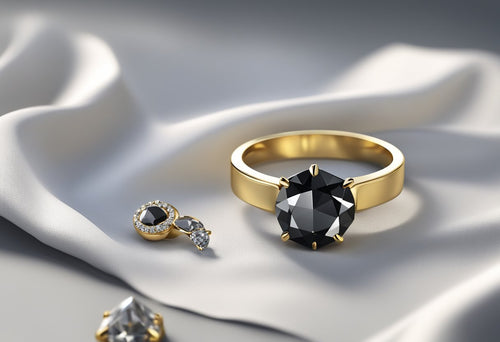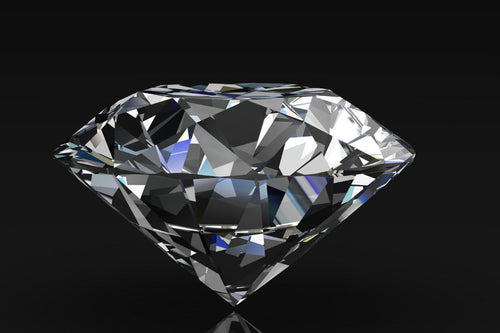When discussing the characteristics of diamonds, two significant features often come under scrutiny: the diamond depth and the table. These elements are fundamental in determining the overall appearance, brilliance, and value of a diamond. The depth of a diamond refers to its height, measured from the culet (the bottom point) to the table (the flat top surface). This measurement is crucial as it influences how light travels within the stone, affecting its fire and sparkle.
Table Of Contents
- Understanding Diamond Anatomy
- Diamond Cut: The Quality Factor
- Optimal Proportions for Brilliant Diamonds
- Diamond Shapes and Their Unique Characteristics
- The Effect of Dimensions on Appearance
- Carat Weight and Size Relations
- Diamond Clarity and Color
- Selecting a Diamond Within Your Budget
- The Importance of a Trusted Vendor
- Choosing the Right Engagement Ring
- Maintenance and Care for Longevity
- Understanding GIA Grading and Its Importance
- The Role of Diamond Certification
- Tools and Techniques for Assessing Diamond Quality
- Making an Educated Purchase
- Frequently Asked Questions
The table of a diamond, being the largest facet, contributes to the dispersion of light as it strikes the surface. A well-proportioned table is key in achieving an optimal balance between brilliance (the amount of white light reflected from the surface) and dispersion or fire (the way light divides into the colors of the spectrum). Mastering the interplay between depth and table is the art of diamond cutting, and it ensures the maximum reflection of light, thereby enhancing the stone's visual allure.
My understanding of diamond value also extends to the quality of the cut, which includes the symmetry and finish of all facets. A skillful cut that respects the diamond's proportions and facet alignment can significantly amplify its light return and sparkle, subsequently elevating its desirability and market worth. While evaluating diamonds, I always take into account how these factors interconnect to deliver the performance that diamond connoisseurs seek.
Understanding Diamond Anatomy
In the realm of gemology, diamond anatomy significantly influences both the appearance and value of the gemstone. I'll explore the critical aspects including facets, diamond depth, and the table to provide a clearer understanding of their roles.
Facets and Their Role
Facets are the flat surfaces on a diamond that allow for the interplay of light, defining the stone's sparkle and brilliance. When light enters a diamond, it refracts and reflects off these facets, a process critical to producing the diamond's luster. The crown, which is the upper part of the diamond, the pavilion, or the lower part, and the girdle, which is the midpoint of the stone, are all covered in these facets. The way these facets are arranged and the precision of their cut impact how light behaves inside the diamond, and subsequently, the overall visual effect.
The Significance of Diamond Depth
The depth of a diamond pertains to the distance between its table and culet, the point at the bottom of the gemstone. The depth is a crucial factor in the diamond's ability to refract light and should be proportionate to the diameter of the stone to achieve optimal brilliance and fire. If a diamond's depth percentage — the depth divided by the average girdle diameter — is either too high or too low, it can lead to light leakage and a subdued sparkle. Correct depth ensures that light entering through the table is refracted within the diamond as intended, thus contributing to its sparkle and life.
| Diamond Cut | Ideal Depth (%) | Ideal Table (%) |
|---|---|---|
| Round Brilliant | 59 - 62 | 53 - 58 |
| Princess | 65 - 75 | 60 - 70 |
| Emerald | 61 - 69 | 62 - 68 |
| Asscher | 65 - 75 | 60 - 70 |
| Cushion | 61 - 68 | 58 - 62 |
| Oval | 59 - 66 | 53 - 63 |
| Marquise | 58 - 63 | 53 - 58 |
| Pear | 59 - 63 | 53 - 63 |
| Heart | 58 - 62 | 53 - 59 |
| Radiant | 61 - 69 | 58 - 62 |
Table: The Window into a Diamond
The table is the large, flat facet on the top of the diamond and serves as a window into the stone, allowing light to enter and exit. Its size relative to the diameter of the diamond — the table percentage — is instrumental in dictating how light travels and disperses, which affects the stone's brilliance. A well-proportioned table works in concert with the crown and pavilion to enhance fire and scintillation. However, a table that is too large or too small can compromise light performance, making the balance of table size to the rest of the diamond a key aspect in diamond cutting.
Diamond Cut: The Quality Factor
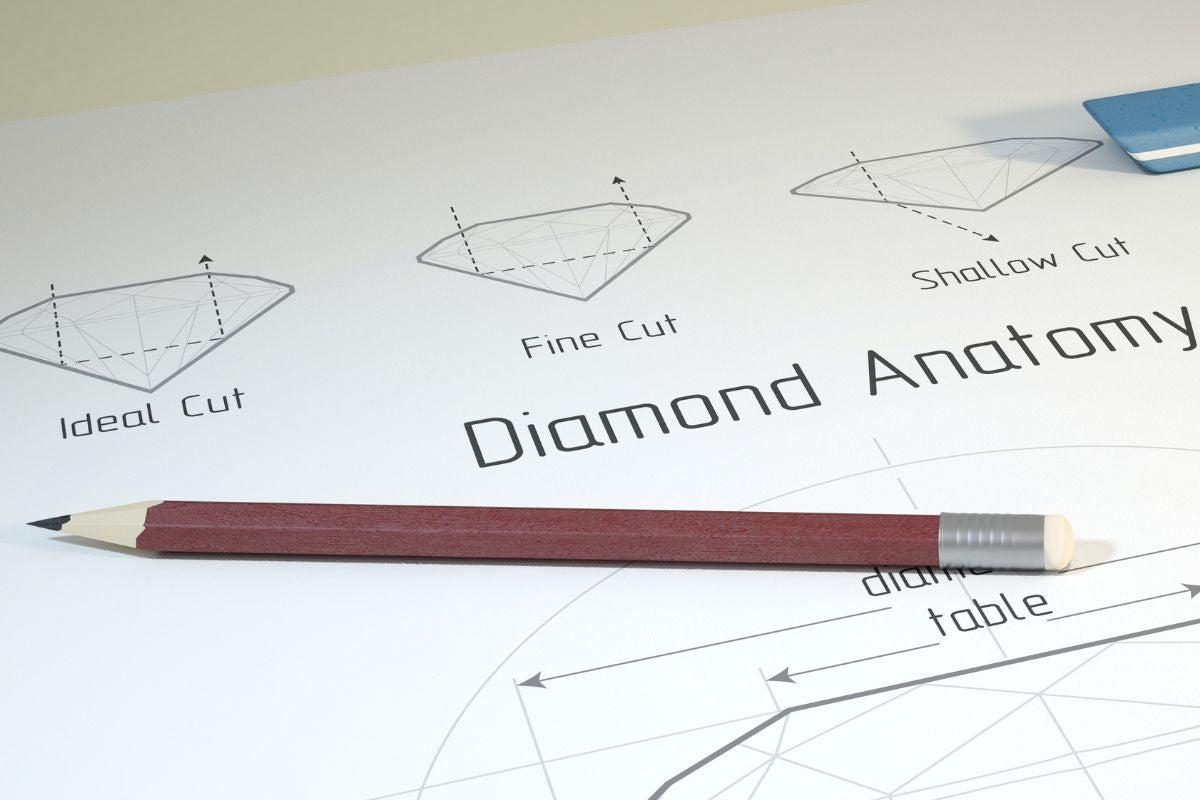
When assessing diamonds, I consider the cut to be a crucial determinant of its overall beauty. The quality factor of a diamond's cut hinges on precision and proportions that influence its brilliance and fire.
Interplay Between Depth and Table
The relationship between a diamond's depth percentage and table percentage is fundamental to its cut quality. A well-executed balance ensures that light is captured effectively, contributing to the stone's brilliance. The ideal cut is a culmination of ideal depth and table percentages, enhancing the diamond's ability to reflect light.
Evaluating Cut Quality
Cut quality is paramount, and it is meticulously assessed through a cut grade. This grade reflects how well a diamond's facets interact with light. An excellent cut grade signifies that a diamond's brightness, fire, and scintillation are at their peak due to optimal facet proportions.
The Impact of Cut on Light Performance
A diamond with a premium cut grade commands attention through its exceptional light performance. It showcases intense fire, which refers to the colorful flashes it emits, alongside a high level of brightness, the white light reflected out of the diamond. Scintillation speaks to the sparkle that occurs with movement. A fine-tuned cut magnifies these traits, illustrating my belief in the profound effect of cut on a diamond's allure.
Optimal Proportions for Brilliant Diamonds

The key to a diamond's allure lies in its ability to reflect and refract light, resulting in the coveted brilliance and sparkle. Precise geometrical proportions are crucial in this regard.
Ideal Table Percentages
The table percentage of a diamond is the width of the table divided by the diameter of the girdle, expressed as a percentage. For a round brilliant cut diamond, an ideal table percentage typically falls between 53% and 58%. This range is critical as it maintains an excellent balance between fire and brilliance. When a table is too large or too small, it can diminish a diamond's ability to properly reflect light, compromising its sparkle.
Ideal Diamond Depth and Its Effect on Brilliance
In the context of diamond proportions, depth percentage plays a pivotal role as it is compared to the overall diameter of the diamond. An ideal depth percentage hovers around 59% to 62.6% for round brilliant cuts. Diamonds within this depth range maintain the optimal path for light to travel, enhancing the brilliance of the diamond. If a diamond's depth percentage is too shallow or too deep, light will escape from the sides or bottom of the stone, resulting in less brilliance and a lackluster appearance.
Diamond Shapes and Their Unique Characteristics
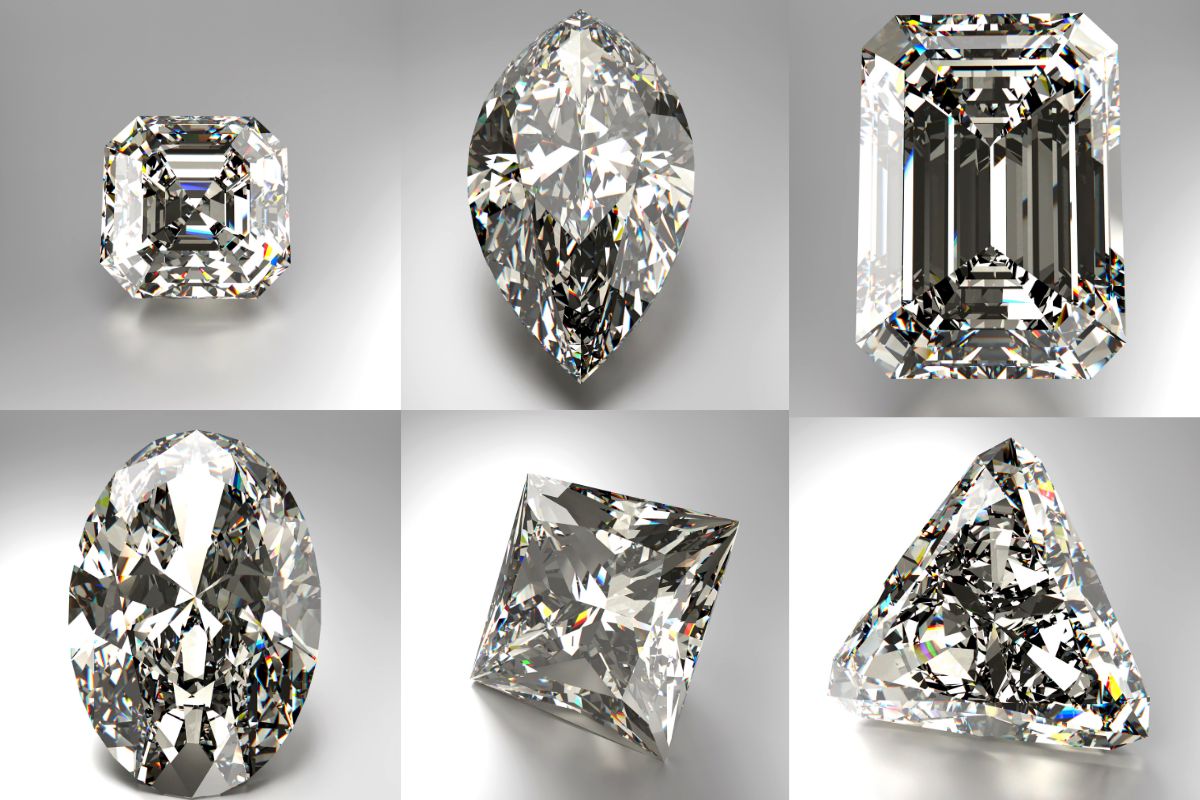
In my examination of diamond shapes, it's evident that each cut brings its own set of unique characteristics that influence both the aesthetic appeal and the quality of the stone.
Round Cut Diamonds: A Benchmark of Excellence
Round cut diamonds are renowned for their versatility and unparalleled brilliance. As a traditional favorite, the round cut's precise facets are designed to maximize light return, embodying a classic sparkle that's both timeless and highly sought-after. Often referred to as round brilliant diamonds, these gems set a high standard for assessing the cut quality of other diamond shapes.
Key features of round cut diamonds include:
- Symmetry: Perfect 360-degree symmetry helps enhance brightness and fire.
- Facet Arrangement: Typically comprised of 58 facets, these diamonds reflect light efficiently.
Fancy Shapes: Princess, Cushion, Oval, and Others
Moving beyond the round cut, fancy shaped diamonds each carry an individual charm and a distinct set of characteristics. Here are a few prominent examples:
-
Princess Cut: This shape is beloved for its modern, geometric look, combining both the brilliance of a round diamond and a unique square or rectangular outline. With sharp uncut corners, it often shines slightly less than round diamonds but offers a contemporary elegance.
- Angular Profile: Its sharp corners give it a distinctive, contemporary look.
- Faceting Style: A brilliant-cut faceting style is similar to that of round diamonds, creating notable sparkle.
-
Cushion Cut: Known for its rounded corners and larger facets, the cushion cut is a blend of traditional and modern styles. This shape offers a soft, romantic appeal and a vintage glow that captivates many diamond enthusiasts.
- Soft Edges: Its rounded corners provide a gentle and inviting appearance.
- Light Dispersion: Offers less reflection compared to round diamonds but often exhibits a unique "crushed ice" effect.
-
Oval Cut: The oval diamond boasts an elongated shape that can give the illusion of greater size and has an aesthetic that is both elegant and innovative. Its curvature renders a flattering effect on the wearer's hand.
- Lengthened Form: Its elongated shape contributes to the appearance of greater size.
- Bowtie Effect: Varies in visibility, but it's a common characteristic that can add to an oval diamond's uniqueness.
-
Emerald Cut: Recognized for its step-cut facets and elongated rectangular shape with trimmed corners. It provides a hall-of-mirrors effect that emphasizes the clarity of the diamond, offering a sophisticated, understated glimmer.
- Open Table: The large table and step-cut facets highlight clarity and subtle reflections.
- Unique Sparkle: Instead of fire, the emerald cut exhibits an elegant, mirror-like shine.
The Effect of Dimensions on Appearance
| Dimension | Effect on Appearance | Analysis |
|---|---|---|
| 1. Depth | Shallow depth may result in a larger appearance, while excessive depth can lead to a dark center. | Optimal depth percentage ranges between 58% and 63% for round brilliants. |
| 2. Table Size | A larger table may enhance brilliance, but too large may compromise fire and dispersion. | Ideal table percentage typically falls between 53% and 63%. |
| 3. Crown Height | Higher crown height may increase brilliance, but extremely high crowns can create a dark center. | Ideal crown height is around 10% to 16% of total depth. |
| 4. Pavilion Depth | Shallow pavilion depth may result in light leakage, while deep pavilions can cause a dark appearance. | Optimal pavilion depth ranges from 42% to 43% for round brilliants. |
| 5. Girdle Thickness | Medium girdle thickness is preferred for durability and appearance. | Ideal girdle thickness varies based on diamond shape and wearer's preference. |
The critical measurements of diamonds, such as width, depth, and table size, significantly influence their overall appearance, including how brilliantly they reflect light.
Width, Depth and Overall Balance
I understand that the precise balance between the width and depth of a diamond is essential for optimal brilliance and fire. A well-balanced diamond with a proper width-to-depth ratio will reflect light more efficiently, providing a better sparkle. For example, a diamond that is too deep or too shallow in relation to its width can appear lackluster because light leaks out the sides or bottom.
The Role of Measurements in Diamond Selection
Selecting a diamond involves understanding how measurements relate to carat weight and appearance. Carat weight alone doesn't define a diamond's visual impact; it's the dimensions in millimeters that determine how large the stone appears. For instance, a 1-carat diamond might actually have a smaller width if it carries more of its weight in depth, potentially making it less brilliant. It is my job to ensure that clients are aware that measurements are as critical as carat weight when assessing a diamond's aesthetic value.
Carat Weight and Size Relations

When I discuss diamonds, the interplay between carat weight and size is pivotal. Carat directly correlates to the diamond's weight, not necessarily its size, which can lead to some confusion.
Understanding Carat vs. Dimension
In my analysis of diamonds, it's crucial to clarify that carat weight refers to the weight of the diamond and is one carat equals 200 milligrams. However, dimension speaks of the stone's physical measurements, typically in millimeters. Despite common belief, two diamonds of identical carat weight can appear quite different in size depending on their cut and shape. For example, a diamond that is cut shallow may appear larger than a deeper-cut diamond of the same weight because it has a larger table - the top flat facet of the stone.
Balancing Carat Weight with Cut Quality
Advanced diamond shoppers know that maximising carat weight without considering cut quality can lead to a less desirable gem. A well-cut diamond will exhibit superior brilliance and fire compared to a poorly cut stone of similar carat weight. To illustrate, I’ve seen a diamond with a smaller carat weight and excellent cut proportions often looks larger and more radiant than a heavier diamond with a subpar cut. Therefore, when evaluating carat weight, it's imperative to consider the dimensions and cut quality in tandem to ensure a balance between size, brilliance, and value.
Diamond Clarity and Color
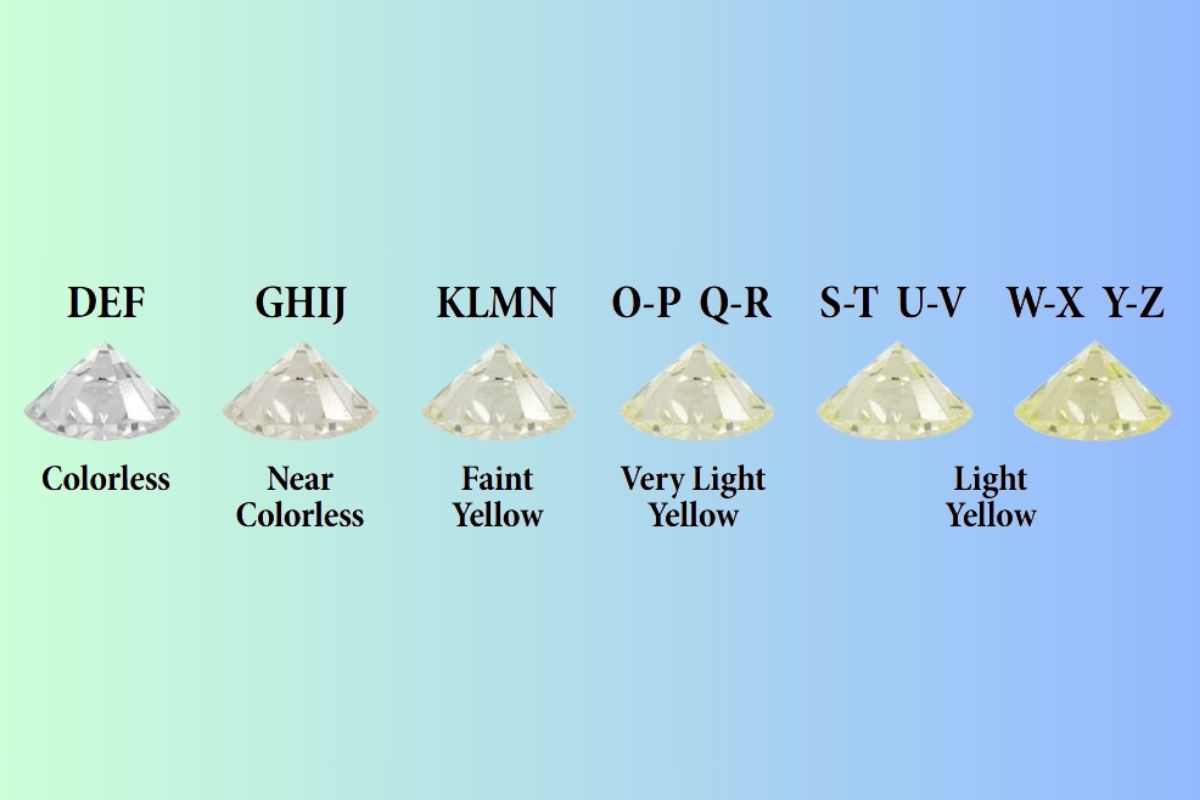
In my evaluation of diamonds, two critical attributes that significantly influence a diamond's appearance are its clarity and color. These traits are meticulously assessed to determine a diamond's overall beauty and value.
Color Grading and Its Influence on Beauty
Color grading is paramount in assessing a diamond's aesthetic appeal. I meticulously review a diamond's color by assigning it a grade from the scale of D (colorless) to Z (light color). This grading reflects how closely a diamond approaches colorlessness – the benchmark of rarity and value. For instance, the grayish hue in some diamonds is sometimes the result of graphitic inclusions, influencing both clarity and perceived color. The precise color grade can significantly sway my perception of its beauty, as it impacts the diamond's brilliance and fire.
Clarity: Imperfections and Their Visibility
When I examine clarity, I am looking for imperfections, which can be either inclusions or blemishes. A diamond's clarity is determined from flawless (no inclusions or blemishes visible under 10x magnification) to included (inclusions and/or blemishes are obvious and can sometimes be seen with the naked eye). Each diamond reveals a unique storyboard of its journey from deep within the Earth, as captured by its internal characteristics. For example, even opaque diamonds that seem impermeable to light endure thorough scrutiny for clarity grading. Clarity can play a fundamental role in establishing a diamond's purity and subsequently its visual appeal, though it must be considered in unison with color to appreciate the full spectrum of a diamond’s beauty.
Selecting a Diamond Within Your Budget
When it comes to selecting a diamond, my focus is always on ensuring that you get the best possible value for your money. I pay close attention to the 4Cs—cut, color, clarity, and carat weight—along with the grading report to make an informed choice that fits your budget.
Balancing the 4Cs for Best Value
Cut
The cut determines the diamond's brilliance and sparkle.
Color
Diamonds come in a range of colors, with colorless diamonds being the most valuable.
Clarity
Clarity refers to the presence of imperfections within the diamond, impacting its purity and brilliance.
Carat
Carat weight determines the size of the diamond, with larger diamonds typically being more valuable.
I prioritize the cut of the diamond above all other factors because it has the greatest impact on a diamond's brilliance and overall appearance. A well-cut diamond can appear more brilliant and larger than its actual carat weight, which can allow you to choose a stone with a slightly lower color or clarity grade without compromising on sparkle.
In terms of color and clarity, it's useful to know that some imperfections are not visible to the naked eye. I aim for a balance; for instance, a color grade of G-H and clarity of VS2-SI1 often provides a beautiful diamond at a more attractive price point than a top-graded flawless stone.
Reading and Interpreting Grading Reports
Grading reports are essential for understanding a diamond's quality and ensuring that you're making a knowledgeable purchase. I meticulously review grading reports from reputable labs, paying close attention to the diamond depth and table, as these factors affect how a diamond reflects light.
A table percentage between 54-60% and a total depth of 58-62.5% are generally considered ideal proportions for round brilliant diamonds. By interpreting these numbers correctly, I ensure that the selected diamond maximizes light return and gives you the best sparkle within your allocated budget.
The Importance of a Trusted Vendor

When I invest in diamonds, particularly focusing on aspects like depth and table, selecting a trusted vendor is critical. This choice impacts both the quality and authenticity of the gemstone I purchase.
Evaluating Vendors and Their Offerings
In my experience, evaluating vendors comes down to their reputation and range of products. Companies like James Allen and Blue Nile are established online retailers who provide detailed information on a diamond's properties. For instance, James Allen offers 360-degree imagery, which helps in assessing the diamond’s cut and structure, including its table and depth. A trustworthy vendor should also have a diversity in selection, offering me a variety of choices from the wholesale market. I prefer those who curate their collections with care, akin to trusted jewelers, ensuring each diamond meets specific quality standards.
Certification and Assurance
Certification is non-negotiable. A certificate from a renowned lab like the Gemological Institute of America (GIA) provides assurance of the diamond's characteristics. This is where vendors like Whiteflash excel, providing AGS or GIA certified diamonds. Such certs clarify important parameters including depth percentage and table size. I insist on documentation that ensures the diamond's dimensions are ideal for its cut, influencing its brilliance and fire. Moreover, this certification verifies that the gemstone was ethically sourced and natural, which aligns with my personal values of responsible purchasing.
Choosing the Right Engagement Ring
When I select an engagement ring, I focus on the diamond's depth and table because these factors greatly influence the stone's brilliance and sparkle.
Incorporating Diamond Depth and Table into Your Selection
The diamond's depth is the height of a diamond measured from the culet (bottom tip) to the table (top flat surface), expressed as a percentage of the stone's average diameter. A well-proportioned depth ensures maximum brilliance, allowing the light to reflect and refract properly.
On the other hand, the table is the largest facet of a diamond, also presented as a percentage of the stone's average girdle diameter. The table size impacts how light performs; too large or too small can negatively affect the diamond's ability to sparkle.
Here are the ideal proportions I look for:
- Table: 53% - 57% of the diamond's average diameter
- Depth: 59% - 62.5% of the diamond's average diameter
These percentages are a good starting point, but each diamond's cut should be evaluated on individual merit.
Ensuring a Lasting Sparkle
The enduring sparkle of an engagement ring is tied to the interplay between its depth and table. I ensure a lasting sparkle by:
-
Checking the diamond's total depth percentage; it indicates the diamond's proportion and how well it will reflect light. This should align closely with the ideal range.
-
Observing the size of the diamond table compared to the overall structure of the stone. A table that is too wide may make the diamond look larger, but it could potentially sacrifice some brilliance.
I also rely on reputable grading reports that often include an evaluation of a diamond's cut, giving insight into how these factors interact. By prioritizing a balanced depth and table, the engagement ring I choose promises a dazzling display with every movement.
Maintenance and Care for Longevity

To ensure the maximum longevity of a diamond, I focus on two crucial aspects: proper cleaning to maintain its brilliance and seeking regular inspections for professional upkeep. These measures not only preserve the diamond’s visual appeal but also its structural integrity.
Cleaning and Protecting Your Diamond
When cleaning my diamond, I make use of a solution of warm water and mild dish soap, applying it gently with a soft brush. It's essential to clean beneath the diamond as well, as this area can accumulate the most oils and debris. After cleaning, I rinse the diamond thoroughly and dry it with a soft, lint-free cloth. For more stubborn grime, I utilize a professionally recommended diamond cleaning solution for a deeper cleanse without causing damage.
- Cleaning Solution: Mix of warm water and mild dish soap
- Cleaning Tools: Soft brush and lint-free cloth
- Frequency: At least twice a month
Regular Inspections and Professional Advice
I make it a habit to visit a trusted jeweler at least once a year for a professional inspection. They check for any potential issues like loose settings or worn mountings that can affect the diamond’s stability. Their expertise also extends to advising on the best practices for long-term care, ensuring that my diamond’s polish and brilliance remain intact throughout its lifetime.
- Inspection Frequency: Annually or biannually
- Professional Services: Mounting integrity check, professional polishing
By adhering to these guidelines, I maintain the beauty and durability of my diamond, effectively extending its wear for years to come.
Understanding GIA Grading and Its Importance
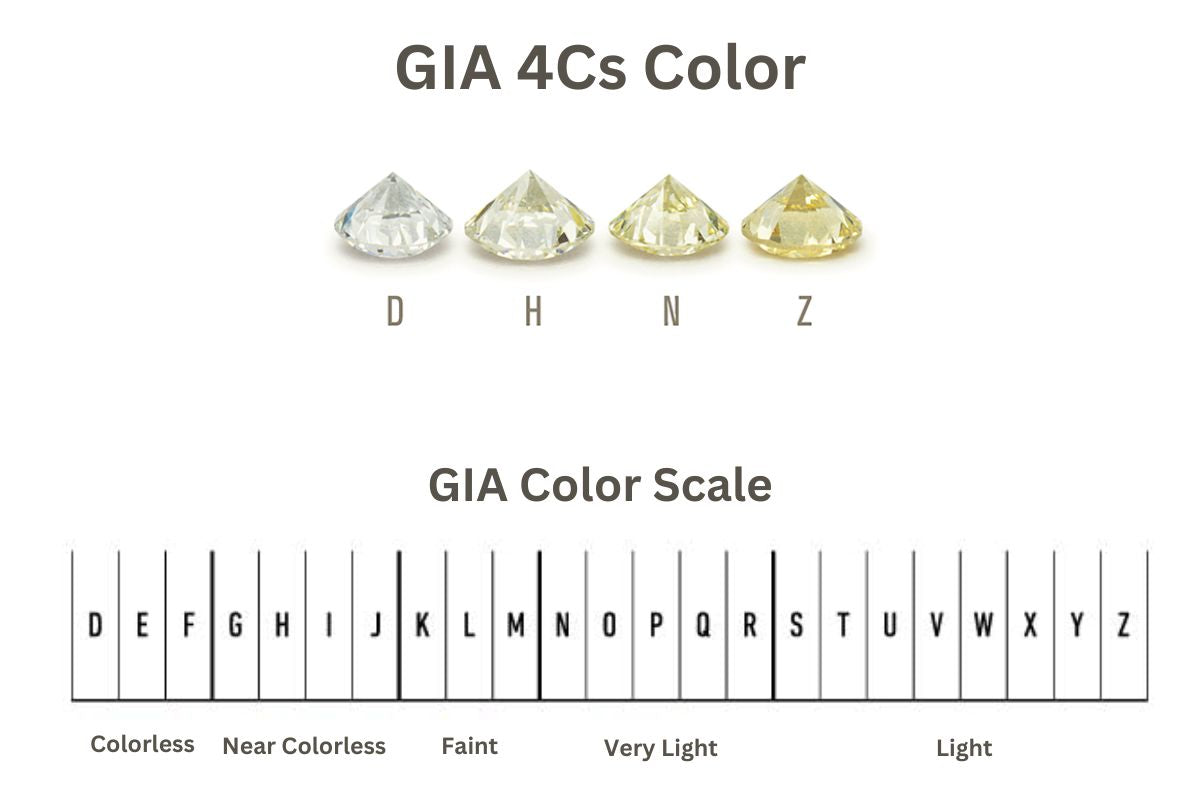
As an expert in gemology, I appreciate the crucial role that the Gemological Institute of America (GIA) plays in diamond grading. The GIA's methods are globally recognized as the benchmark for the grading of diamonds, establishing trust in an industry where transparency is key.
Grading: When a diamond is graded by GIA, different characteristics are meticulously evaluated. Among these, the color and clarity of the diamonds stand out as key indicators of quality.
- Color: A diamond's color grade indicates the presence of color in the stone, with D-grade representing colorless and Z-grade showing noticeable color.
- Clarity: Diamonds often feature natural imperfections known as inclusions. The clarity grade evaluates these and their impact on the appearance of the stone.
Proportions and Cut Quality: However, it's not just about color and clarity. The proportions of a diamond, particularly the depth and table, greatly affect its overall beauty and value. The table is the flat facet on the top, and the depth is the distance from the table to the bottom tip.
- Depth: The depth percentage, a ratio of the stone's depth to the overall diameter, influences how light travels within the diamond.
- Table: The table percentage, the width of the table compared to the diameter of the diamond, affects light return and dispersion, contributing to the diamond's sparkle.
GIA’s cut grade scale takes into account these proportions and more to assess the cut quality of a diamond. Precise measurement of the table and depth helps to ensure each diamond reflects and refracts light to create maximum brilliance and fire.
In short, GIA grading gives buyers and sellers a common language, making the quality and value of diamonds clear and straightforward. By understanding the importance of GIA grading, I can provide invaluable guidance in the selection of diamonds, ensuring each choice is made with confidence and expertise.
The Role of Diamond Certification

When I purchase a diamond, I look for a grading report, as it serves as a fundamental assurance of quality and authenticity. This certification, often provided by reputable organizations such as the Gemological Institute of America (GIA), evaluates a diamond based on the 4Cs: Carat Weight, Cut, Color, and Clarity.
Carat Weight details the diamond's weight, a direct measure of its size. The Cut grade assesses how a diamond's facets interact with light, impacting its brilliance. Evaluating Color, the grading scales how colorless the diamond is; the less color, the more valuable it generally is. Clarity indicates the presence of inclusions or blemishes, with the highest clarity grade being 'Flawless'.
Here’s why the grading report is vital:
-
Confidence in the Purchase: My investment in a diamond is significant. A GIA grading report offers me peace of mind that the diamond meets specific quality standards.
-
Understanding of the Diamond's Value: The 4Cs quantified on the report help me discern the diamond's worth in the market. It's crucial when I'm considering resale value or insurance.
-
Informed Decisions: By reviewing the report, I make a more informed choice on whether the diamond's attributes justify the price.
-
Standardization: These reports create a standard measure across all diamonds, enabling fair comparison.
A diamond's table and depth—not explicitly part of the 4Cs—also significantly impact its appearance and are typically included in the report. The table is the top flat facet of the diamond, and the depth is the distance from the table to the culet. Their proportions relative to the diamond's diameter affect its ability to sparkle.
In essence, diamond certification offers a transparent foundation for my decision-making process in selecting a diamond.
Tools and Techniques for Assessing Diamond Quality
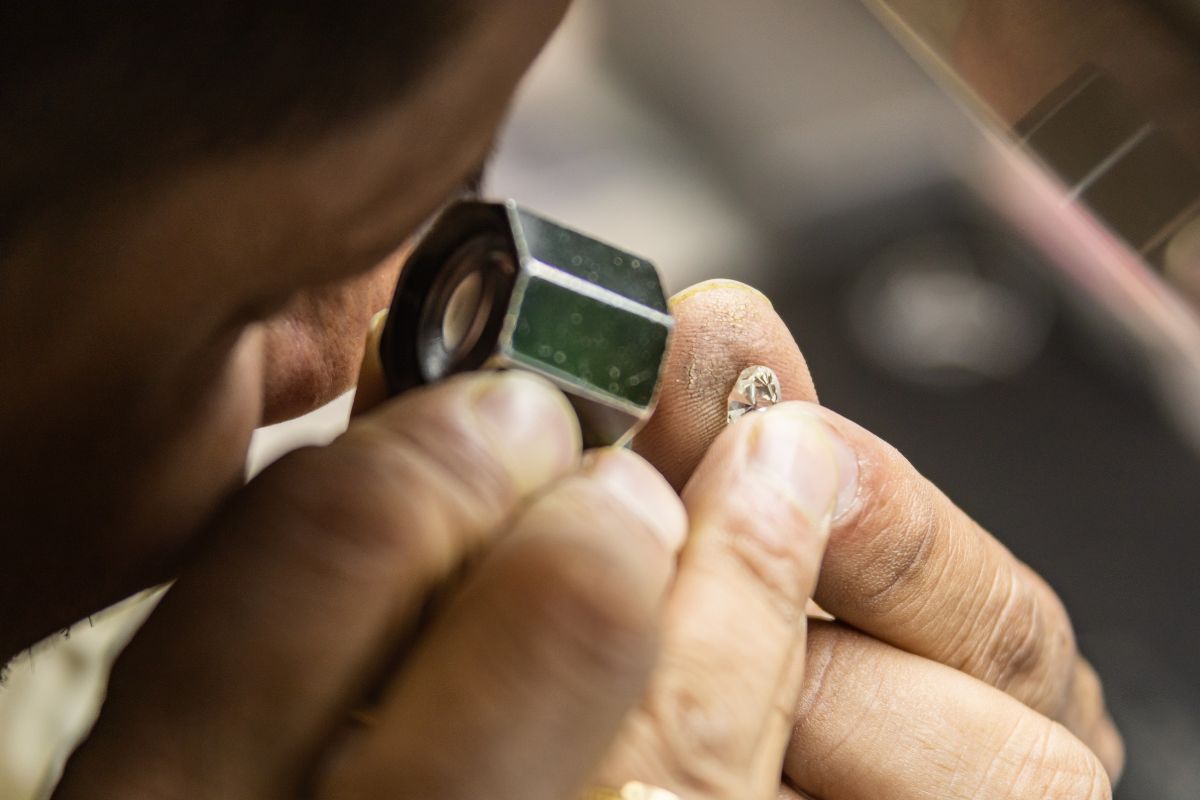
| Aspect | Tool/Technique | Description |
|---|---|---|
| 1. Color | Master Set of Diamonds | Comparison with standard diamonds of known color grades. |
| 2. Clarity | Loupe (10x Magnification) | Inspecting internal and external flaws. |
| 3. Cut | Proportions Viewer | Assessment of proportions and symmetry. |
| 4. Carat Weight | Digital Scale | Precise measurement of weight in carats. |
| 5. Polish and Symmetry | Diamond Grading Report | Analysis by gemologists based on standard criteria. |
Evaluating diamonds accurately requires precision tools and an understanding of gemological standards. I focus on key methods involving a tool known as a loupe, and interpreting the details provided on diamond certificates.
Using a Loupe to Inspect Diamond Depth and Table
A loupe is a small magnification device that enables me to scrutinize the diamond depth and table up close. The depth of a diamond refers to its height from the culet to the table. I ensure that the depth percentage, which is depth divided by width, falls within an ideal range for maximum brilliance. Similarly, the table is the flat facet on the top, and the table percentage, table width divided by overall width of the diamond, is crucial for both beauty and value.
When inspecting a diamond's depth and table with a loupe, I look for symmetry and proportion. An ideal table size ranges from 53% to 58% of the diamond's width, while a depth percentage of 59% to 62.6% is commonly sought after for round brilliants.
Though it's possible to examine facets and overall finish with the loupe, precise measurements of depth and table require additional gemological tools.
Understanding the Specifications on Diamond Certificates
Diamond certificates provide a detailed map of a diamond's characteristics. I meticulously examine the specifications that describe the proportions, especially the diamond depth and diamond table, to assist in assessing its quality.
Certificates typically list:
- Depth Percentage: Implies the depth's proportion to total diameter, affecting brilliance.
- Table Percentage: Indicates how the table's size compares to the diamond's overall width.
By analyzing these specifications, I get a clear picture of how well the diamond will refract and reflect light, which is critical for assessing its cut quality. It's paramount that I correlate the information from the certificate with my own observations, ensuring that the diamond meets the high standards expected in the gem industry.
Making an Educated Purchase
When it comes to buying a diamond, understanding the interplay between a diamond's depth and table is crucial for making a smart investment that aligns with my budget.
Finding the Perfect Balance Between Depth, Table, and Cost
In my experience, finding the perfect diamond requires a balance between depth percentage, table size, and cost. The depth of a diamond, which is the height from the culet to the table, should ideally range between 58% and 62% of the diamond's average diameter. A table size, which is the width of the top facet of the diamond, is considered ideal when it is between 53% and 58%.
- Optimal Depth Percentages: 58% - 62%
- Ideal Table Sizes: 53% - 58%
Maintaining this balance ensures the diamond reflects light beautifully, offering the brilliance and fire that diamonds are known for. Straying too far from these ranges could lead to a lackluster appearance or an overemphasis on size at the cost of sparkle.
Expert Tips for Diamond Shoppers
As an expert in diamond buying, I've gathered insights from renowned figures in the industry. According to Mike Fried, CEO of a leading diamond education site, assessing a diamond's cut quality should be non-negotiable. While it's tempting to prioritize carat size or clarity, the cut will determine the stone's overall appearance.
My advice to diamond shoppers is to:
- Prioritize cut quality: A well-cut diamond will exhibit more fire and brilliance.
- Inspect the diamond personally or use high-quality imaging: Ensure the balance between depth and table is conducive to a stone's sparkle.
- Align your preferences with your budget: Don't compromise on cut for a slightly larger carat size.
By focusing on the technical aspects and not just the aesthetics, my purchases are informed by both beauty and value. Remember, a diamond's worth is not just in its size, but in its ability to capture and reflect light—a scientific art perfected by its cut.
Frequently Asked Questions
In my experience, details like table size and diamond depth are crucial factors in a diamond's cut quality. I'll cover some specific questions to shed light on these aspects.
How important is the table size in a diamond's overall cut quality?
The table size of a diamond is central to its brilliance and overall cut quality. A table that is too large or too small can negatively impact the way light reflects and disperses through the diamond.
What is considered the ideal depth percentage for a round diamond?
For a round diamond, an ideal depth percentage typically ranges from 59% to 62.6%. This range helps to ensure the stone exhibits a balance between brilliance and fire.
How can I calculate the appropriate depth and table for a particular diamond shape?
To calculate the appropriate depth and table for a diamond shape, I use guidelines set by gemological authorities which provide specific ratios that depend on the diamond shape in question.
What does the depth of a diamond indicate about its appearance and brilliance?
The depth of a diamond plays a key role in its appearance and brilliance. Proper depth ensures that light entering the stone is reflected back to the eye rather than leaking out the bottom.
Can the table size of a diamond affect its sparkle and why?
Yes, the table size can affect a diamond's sparkle. A smaller or larger than ideal table size can limit the light return and sparkle, as it can affect how light is refracted within the diamond.
How does GIA grading influence the ideal table and depth ratios for diamonds?
GIA grading includes evaluations of table and depth ratios. Their standards help assure that a diamond with an excellent cut grade exhibits balanced proportions that enhance its sparkle and beauty.
Checkout some of our top collections:











